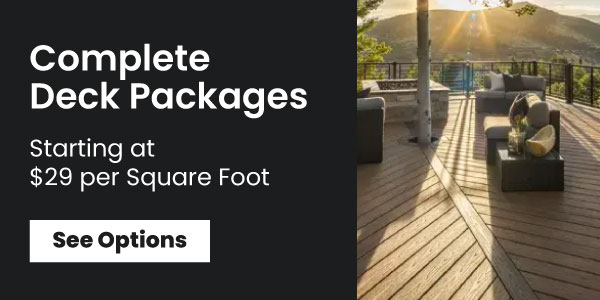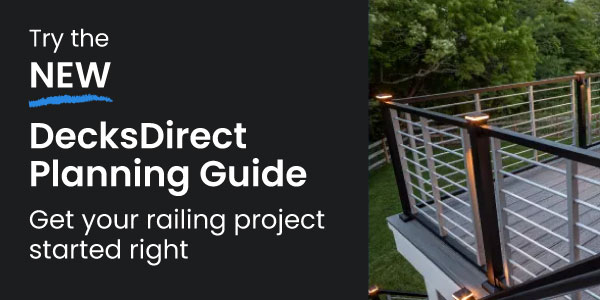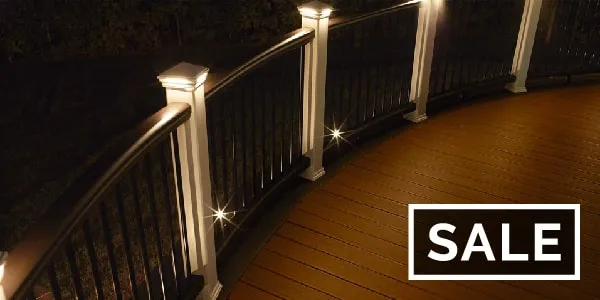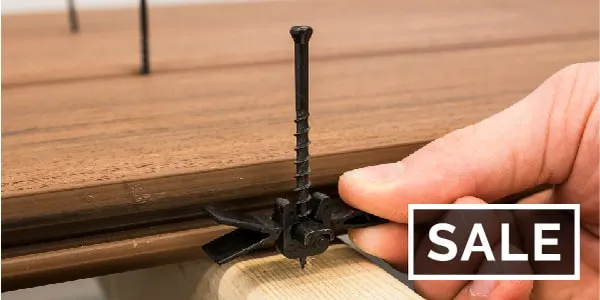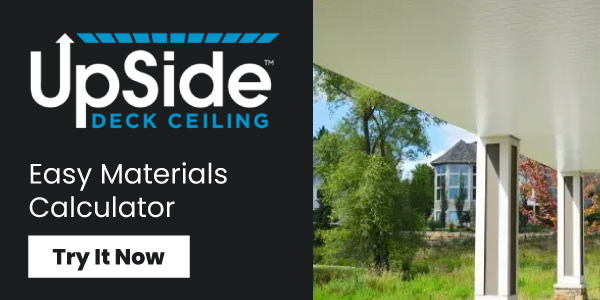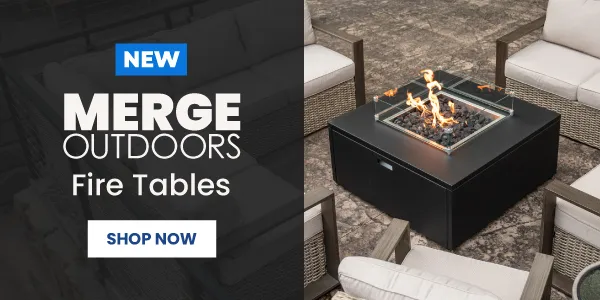The Definitive Roadmap For Any DIY Deck Project
Building a brand-new deck? Renovating a worn-in one? If you’re not sure where to start, you’re not alone. At DecksDirect, we’re dedicated to simplifying the deck-building process so everyone can experience the joy of an amazing deck. That’s why we’ve created this guide to help you plan and carry out your project.
From planning your layout to selecting materials to finding all the tools you need, you'll find every step to your new deck in our DIY Deck Building Checklist.
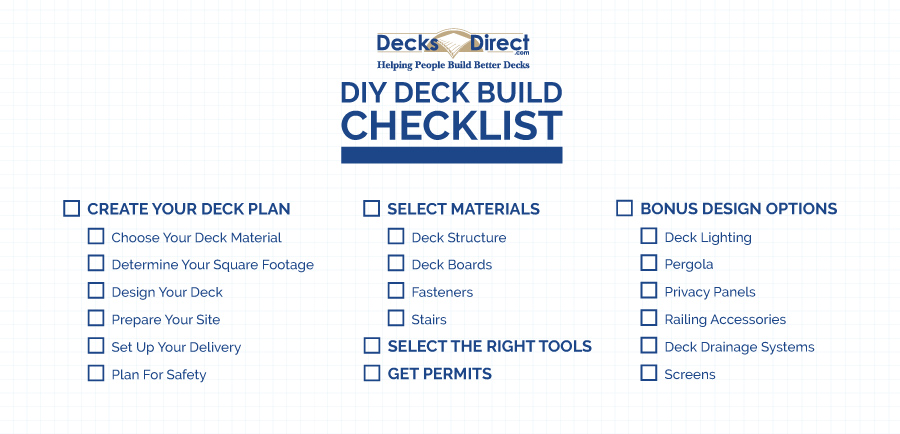
The DIY Deck Building Checklist
- Creating Your Deck Plan
- Choose Your Decking Material
- Determine Your Deck’s Square Footage
- Design Your Deck
- Prepare Your Site
- Set Up Your Delivery
- Plan For Safety
- Selecting Materials
- Tools You’ll Need To Build A Deck
- Getting Permits
- Decorations: Planning For Aesthetics
- From Deck Project To Deck Done!
Creating Your Deck Plan
When the sun is bright and the skies are clear, there’s nothing quite like sitting outside with your family to enjoy the weather and good company. But if your outdoor living space is limited to a couple of patio chairs, it might be time to upgrade your backyard.
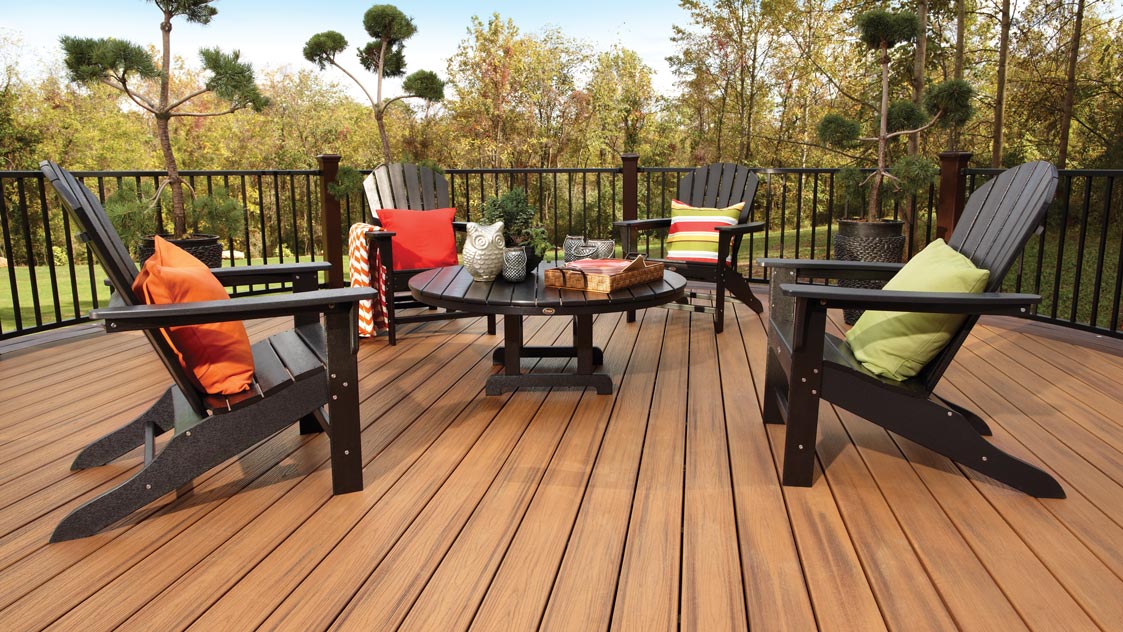
A new deck is more than just a gathering area - it’s an expansion of your living space. Like your other living spaces, your deck should be comfortable and fit your own personal style. But your outdoor living space also allows you to see, smell, and feel the natural wonders of the Great Outdoors in a way no other room can.
If you’re ready to revolutionize your living space with an outdoor deck, DecksDirect is here for you from start to finish. Our trained deck project planners are available by phone to walk you through every step of the process. That means no detail will be lost in the shuffle, and you won’t have to worry about any unforeseen wrinkles slowing or delaying your build. Call us at 1-888-824-5316 to start your deck project plan today!
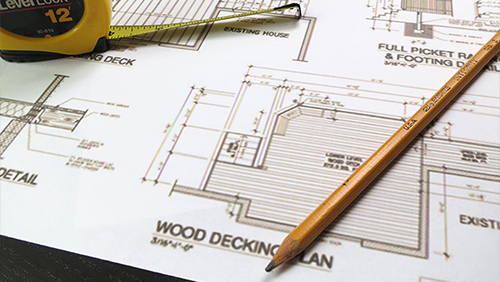
Here’s what our team will help you do before you start your deck project:
Choose Your Deck Material
Before you build a deck, you’ll want to choose a decking material. The most common deck material options are:
- Wood decking
- Composite decking
- PVC decking
- Mineral-based composite decking
Wood decking is typically pressure-treated pine, but homeowners can also choose more expensive woods, such as redwood, cedar, and tropical hardwoods. This gives you a classic-looking deck, though it needs to be refinished to prevent stains and color changes.
Composite decking solves many of wood’s maintenance issues. A combination of natural wood fibers and synthetic plastics, durable composite material looks and feels like wood - but will require much less time and money spent on deck maintenance.
Closely related to composite deck boards are two offshoots of the low-maintenance decking category. PVC decking is fully synthetic for the best moisture protection. Mineral-based composite is a futuristic version of composite decking that’s stronger and holds its shape better even in rising temperatures.
Composite Decking:
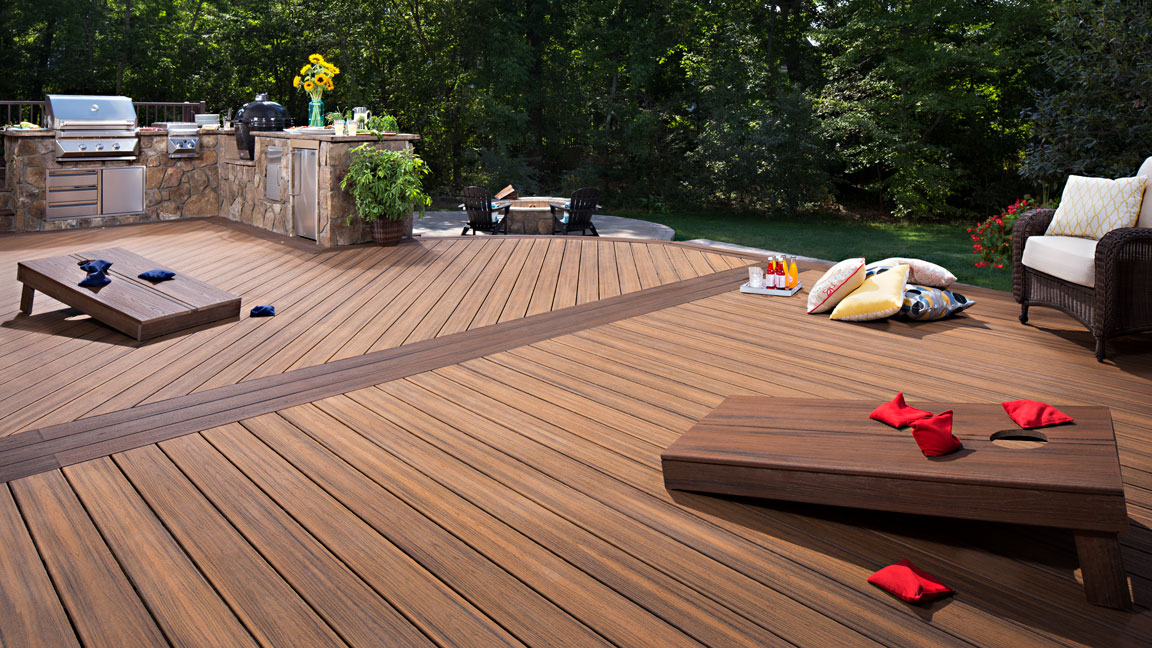
PVC Decking:
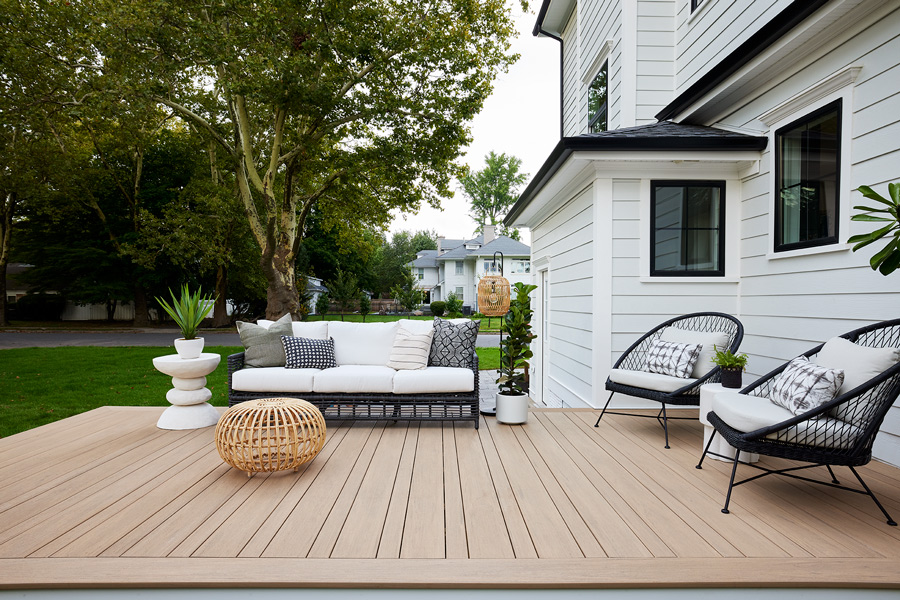
Mineral-Based Composite Decking:
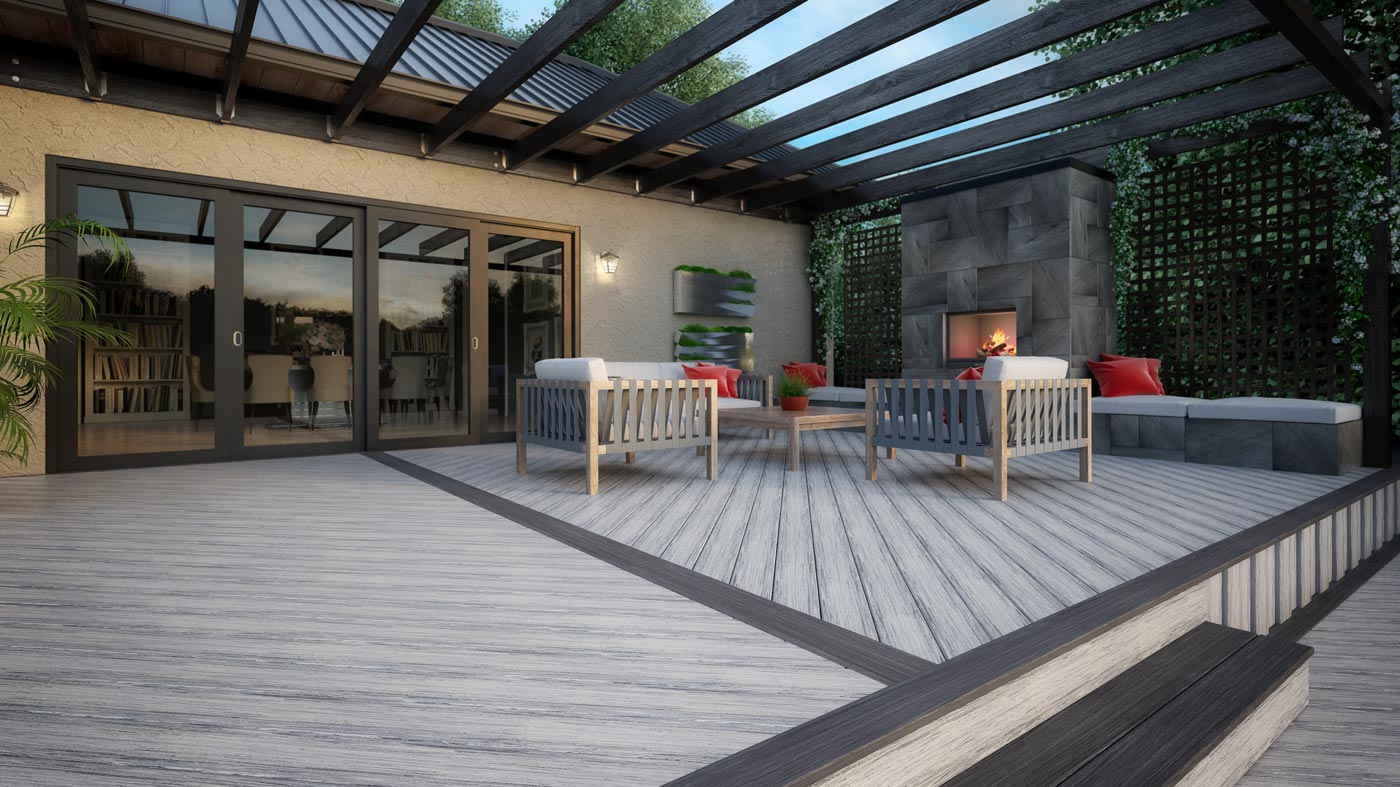
Determine Your Deck’s Square Footage
The cost of your deck project is significantly determined by the square footage. So before you go any further, you’ll want to take some easy measurements.
First, break out a tape measure. If you already have a deck, draw a sketch of its approximate shape. Measure each side of the deck and label the sketch with measurements.
If your deck is a rectangle or square, calculate the area by multiplying the length times the width. If your deck has an irregular shape, divide the drawing into rectangles, squares, and triangles. Calculate the area of each shape, then add the area of each shape for the total square footage. You can see this demonstrated in the video below:
Not a fan of math homework? Call our team at 1-888-824-5316 and we’ll do all the calculating for you.
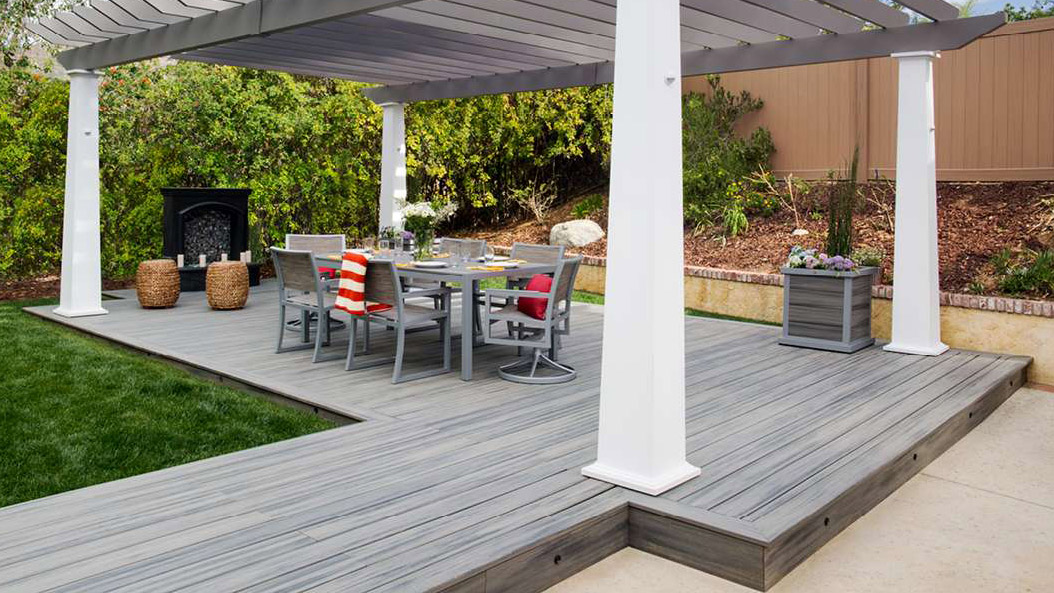
If you don’t already have a deck, measure how large you would like your deck to be, again using the tape measure and drawing it out. If it helps you visualize, measure your living room or your dining room to see how certain dimensions feel - or how things like furniture or a grill will fit in the space.
You’ll also want to use a tape measure to try your dimensions outdoors to see how far your deck will extend into your yard at varying dimensions.
Design Your Deck
If you already have a deck design in mind, the deck project planners at DecksDirect can help your ideas take shape. If you don’t, here are some design tips to consider based on the style of your house.
- For a Craftsman home (natural materials, low-pitched roofs, wide front porches, overhanging window eaves) keep your deck simple and muted so that your home’s natural aesthetic shines.
- For ranch homes (single-story, low roof, wide window eaves), look for a straightforward design with a lesser-seen color in your home.
- For a colonial home (symmetrical design, covered porch, grand entryway, symmetrical dormer window), a deck design with varying levels and different sitting areas adds interest.
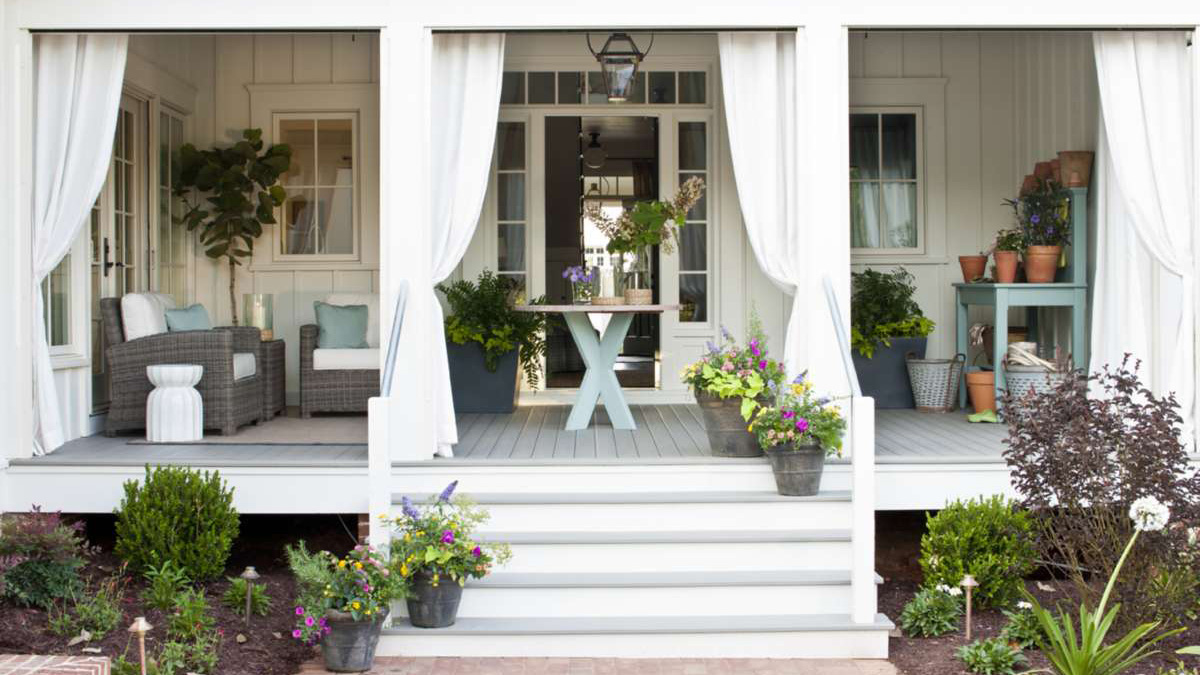
When in doubt, reach out to our trained team: real deck enthusiasts who can look at your exact home specifications and talk through your specific needs and priorities to help you tailor your deck to your life. Not only will we help you find a style that fits your home and lifestyle, but we’ll also build a deck plan to make sure you get every part you need, and help you leave space for future upgrades to things like lighting or railings. You can even email a photo of your home to hello@decksdirect.com for help planning a deck that matches your style.
Prepare Your Site
Is your site ready for building? If not, you’ll need to get it ready.
For example, do you need to clear any gardening beds from the building area? Do you need to check where in your home you can add an exterior door?
This can be simple or highly involved depending on your home. Let’s say you have a fish pond in the area you want to build a deck - that will have to be filled. If you have stone pavers, those will have to be moved.
If you’re not sure where to begin, call DecksDirect and ask about prep work.
Set Up Your Delivery
Whether you’re building the deck yourself or hiring builders to help you, you’ll want to have a plan for accessing the build site and bringing materials to your deck project.
If your house is built into a hill, you or your builders may have to trek up and down the hill to move materials and equipment from your driveway to the backyard build site. That means more work for you or potentially more labor time and labor costs for a crew you’ve hired.
A house on a corner lot can offer great backyard accessibility - take advantage of that. A home in a row, or a house that backs up to a forest, may require some creativity to move materials to your deck build site.
Give our team a call and we’ll help you strategize - we’ve seen every kind of home-and-deck setup imaginable, and we love solving problems.
Plan For Safety
Finally, you’ll need to consider safety - for your builders as well as your future visitors.
Unless you’re a contractor, the safest route is to hire an expert to build your deck for you. Look for a licensed contractor who carries liability insurance and has standard best safety practices on job sites.
As for your future visitors, think about safety features that will protect them. That’s what railings are for. Make sure the railings are secure and sturdy as well as visually appealing. If you already have a deck, check the state of the railings and budget to replace them if necessary.
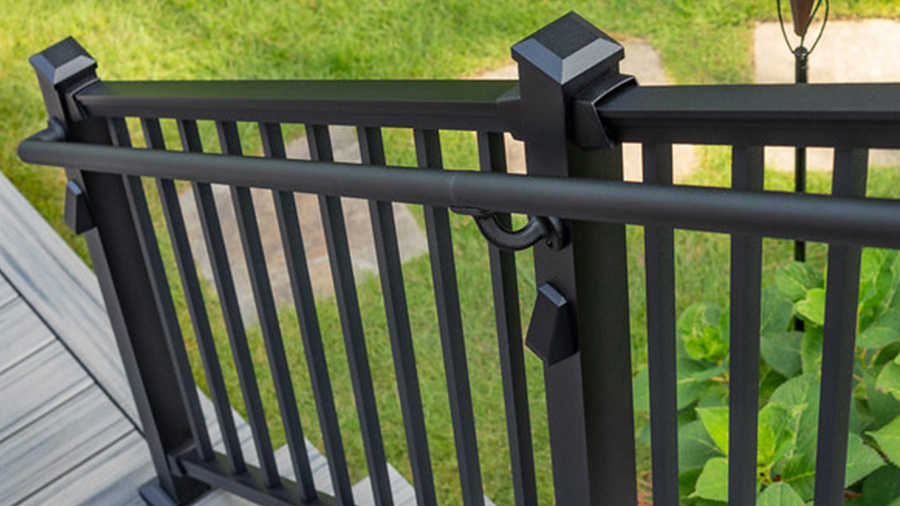
You should also check the stairs on any existing deck. Make sure the risers and stringers are securely attached and guardrails are constructed so that any opening in the assembly is no more than four inches in width. (You can have an opening of up to six inches in the triangle created by your bottom rail, stair tread and stair riser on your staircase). Make sure your stairs aren’t extremely steep or narrow, as this can be dangerous for someone with limited mobility.
Selecting Materials
Your deck isn’t just made of the boards under your feet, and choosing a material isn’t just limited to the visible parts. Your deck includes things like:
- Deck posts
- Beams
- Joists
- Ledger board
- Blocking
- Railings
- Balusters
- Stairs
- Fasteners
- Flashing
Your choice of material will affect your deck’s durability across the board. Here’s what to think about when choosing your materials.
Deck Structure
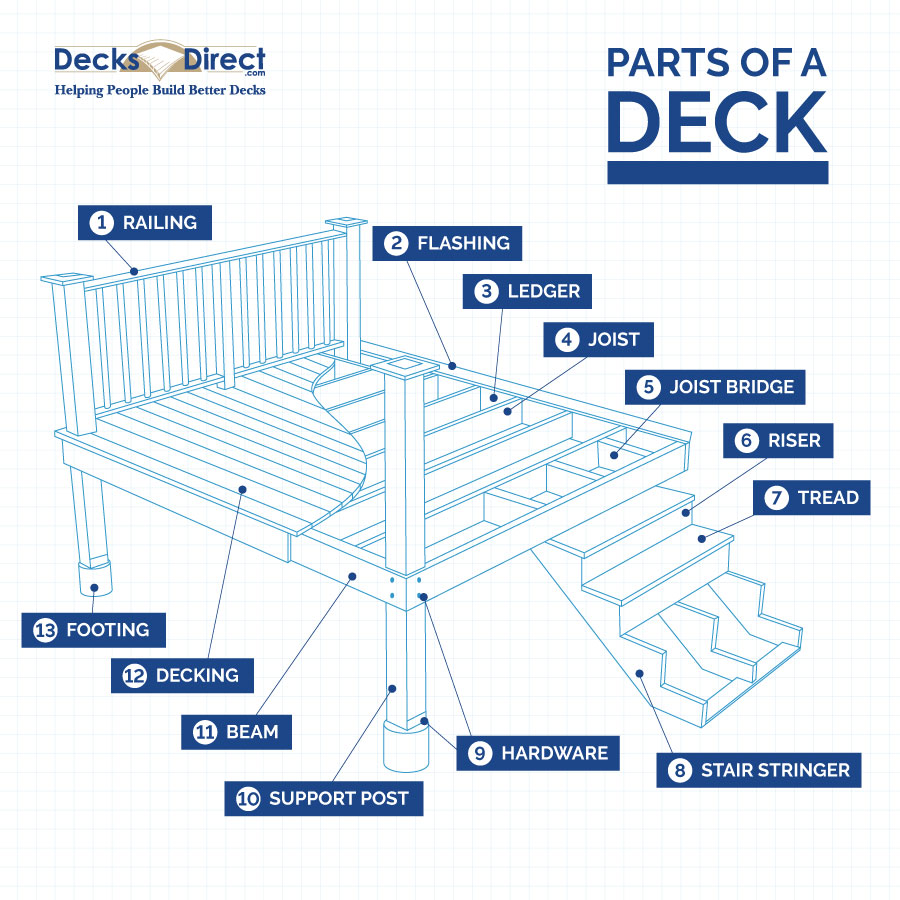
When you’re buying deck materials, keep in mind that you’re buying for the entire structure, which includes decking but also structural support components like deck posts, beams and joists.
Regardless of the deck type, decks always have the same basic structural support elements: joists, beams, blocking, flashing, ledgers, and posts, to name a few.
Deck Boards
We ran through the basic differences between wood and composite decking above. We recommend composite boards. They’re better on durability and lower on maintenance, so you can spend more time enjoying your deck and less time maintaining and replacing it. That’s the goal, right?
Even within the umbrella of composite decking, you’ll have no shortage of options when it comes to color, look, style, and feel.
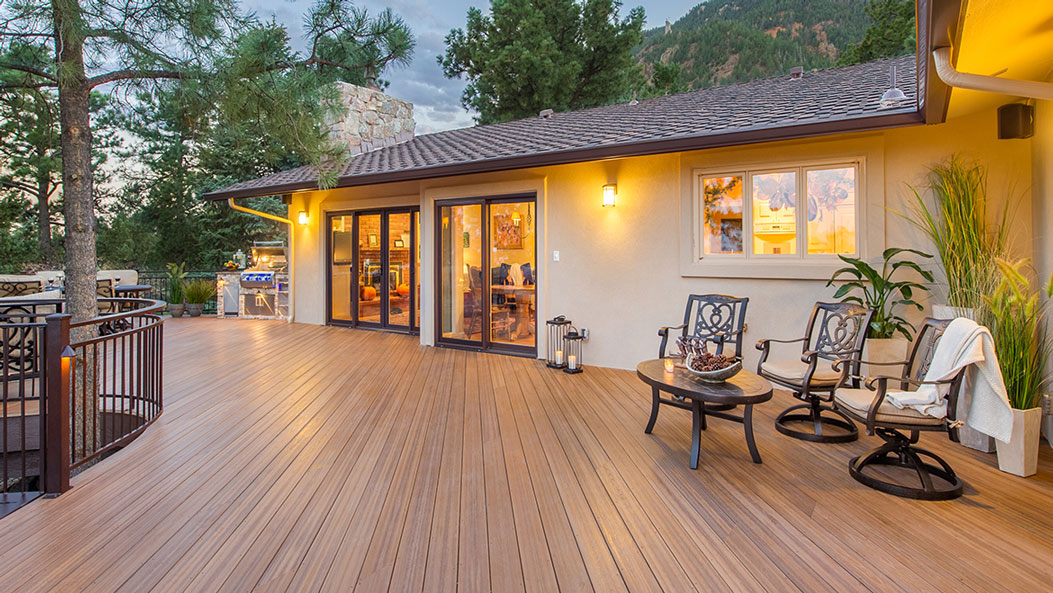
Some popular composite decking brands include:
- Trex
- TimberTech
- Barrette Outdoor Living
- Deckorators
- Fiberon
- Envision
You can browse a wide selection of options on the DecksDirect website to start visualizing what will look best in your outdoor living space.
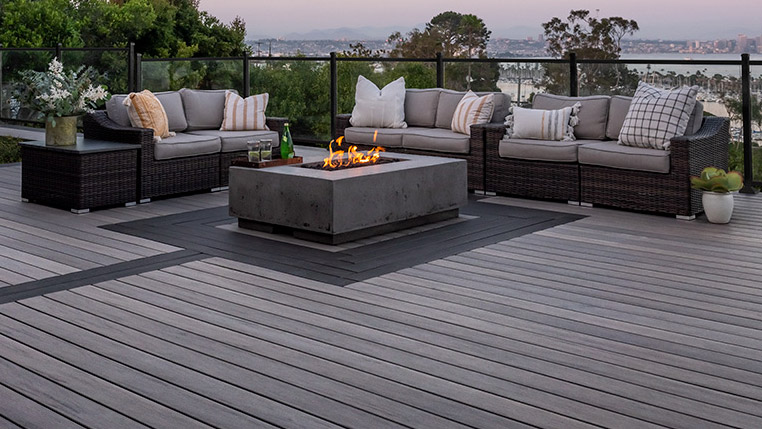
Fasteners
Your fasteners hold the whole deck together. A few common fasteners include:
- Wood screws
- Composite deck board screws
- Screw and Plug Systems
- Decking hidden fasteners
- Rugged structural screws
- Ledger-style screws
As you can see from the list, you can split fasteners by their function, or by the type of material they work with. You can also look at fasteners by the screw head type, such as:
- Flat head
- Trim head
- Truss head
- Hex head
- Round head
- Cap head
It’s not just a stylistic choice - each screw head provides varying levels of structural support and is suitable for various applications based on the size of the hole and the application in question (such as the choice of screws for joists versus beams).

Obviously, this stage can get pretty technical. DecksDirect will be your best guide for your deck plan: give us a call at 1-888-824-5316 and we can help you choose the right fasteners based on your decking material, the load-bearing application in question, and the size of the screw.
If in doubt, think about the decking material, the load-bearing application in question, and the size of the screw. DecksDirect can also help you weigh these options.
Stairs
Your choice of stair materials is directly related to the materials you chose for the surface of your deck, with many of the same pros and cons.
However, your deck stairs need extra attention as a safety concern, especially when winter rolls around. When making your deck plan, look for materials that can hold up to your local seasons, whether that’s consistent heat and humidity or a diverse climate with four distinct seasons.
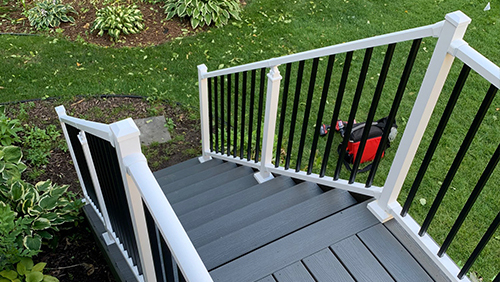
If you choose to build stairs yourself, you’ll need to calculate the rise, run, angle, and stair count. Check out our full guide to calculating stair stringers below. After that, you’ll need your trusty measuring tape, a power drill, and fasteners.
Tools You'll Need To Build a Deck
To build your own deck from scratch, you’re going to need:
- Tape measure
- Chalk lines
- Framing squares
- Speed squares
- Shovels
- Pipe clamps
- Squeeze clamps
- Pry bars
- Wrenches
- Circular saw
- Jigsaw
- Reciprocating saw
- Knife and shears
- Table saw
- Chop saw
- Power nailer
- Hammer
- Power drill
- Router with roundover bit
- Random orbit sander
- Protective gloves
- Protective glasses
- Hard hat
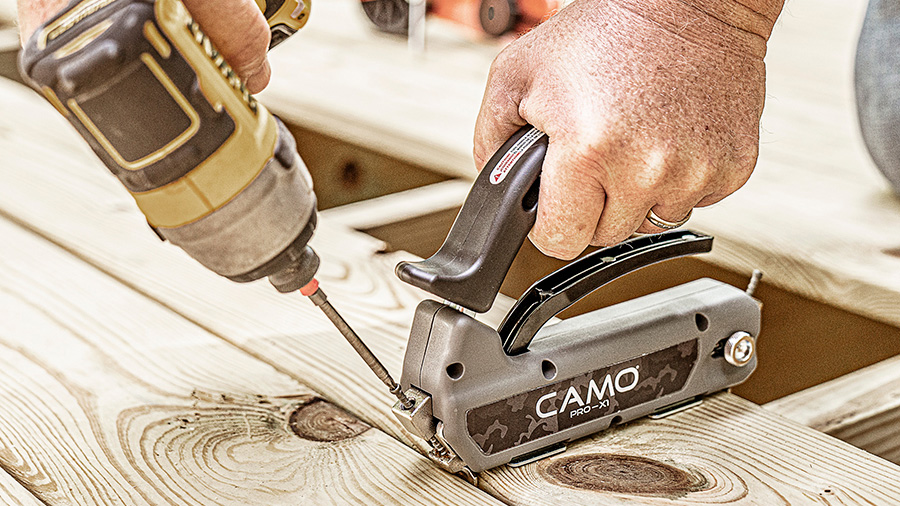
Some tools, like a hammer and power nailer, work the same way. Here’s the thing: if you’re pounding a lot of nails in quick succession, the hammer gets old fast. We also recommended some tools over others for DIY safety (like a random orbit sander over a power sander).
Depending on how you’re choosing to fasten down your deck boards, there are also some helpful time-saving tools you can add, like the CAMO Drive Tool pictured above.
And above all, always make sure you know how to use your tools before you start working. If you’re not sure, stop and ask for help.
Getting Permits
Before you build your dream outdoor oasis, be sure to check your local building codes. Building codes ensure that your project is designed and built up to safety standards. Your city or county will issue building permits to ensure that work is done safely.
The permits you need depend on your project and your local jurisdiction, but some common ones include:
- Demolition permit
- Construction permit
- Residential electrical permit
- Mechanical permit
- Plumbing permit
- Foundation permit
You’ll need to apply for these permits through your county or city. Keep in mind that you’ll also need to make underground wiring inquiries, especially if you need to dig footings.
When you’re dealing with building codes, permits, and wiring, your safest bet is to call a contractor. Your builder already knows the codes they need to check and permits they need to acquire, and they already know where to look.
Keep in mind that while your local building code may allow for certain additions, your homeowners’ association may not. Check with your HOA before you apply for a single permit - your HOA can nail you with steep fines for breaking the rules.
Decorations: Planning For Aesthetics
Your deck isn’t just a utilitarian space - it should also be beautiful! While you’re building, think about your decorations too. In some cases, these should actually be incorporated into your building plan (and thus your permit applications) before you even begin.
Lighting Up Your Deck
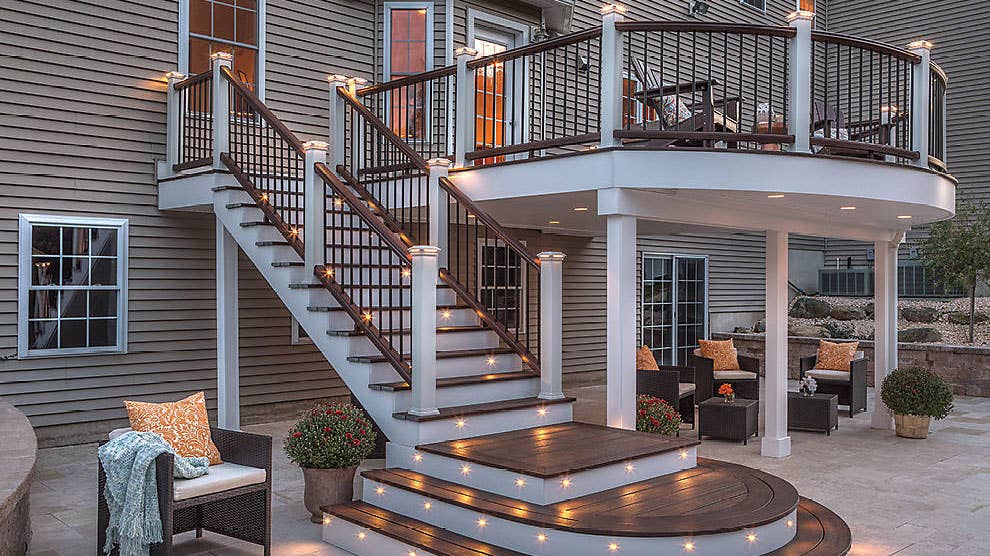
What good is the world’s most beautiful deck if it’s too dark to see it? If you factor lighting into your deck plans from the get-go, you’ll increase your usable deck hours, while creating an end product that is that much more visually stunning.
Some common types of lights include:
- Post cap lights
- Side mount lights
- Under rail lights
- Stair and step lights
- Landscape lights
Solar Lights vs Low-Voltage Lights
You can also choose how your lights are powered. Solar lights draw energy from built-in solar panels and don’t require wiring. Low-voltage lights run off of your home’s electricity and require some wiring to convert your home’s 110-volt power down to a roughly 12-volt level.
Solar lights are generally easy to install, and run on a photocell that turns the lights on when sunlight gets low. But they also require sunlight to recharge during the day, so they’ll need to be installed in the right places to have power throughout the night.
Low-voltage lighting does require some wiring, but can be easy enough to install yourself. You’ll also need a transformer to convert your home’s electricity down to a 12-volt level. Low voltage lighting is usually the most consistent lighting power type.
Choosing your lighting
Your best bet is to draw up a deck lighting plan when you draw up your building plan. You can check out our lighting guide - or call our team of experts - to help decide whether to hard-wire your lights or stick to plug-and-play options. Hard-wiring lights isn’t as complex as it sounds, and can be a more flexible and cost-effective option. But advances in plug-and-play lighting can make illuminating your deck as simple as plugging in your cell phone to charge.
Adding a Pergola
If you’re looking for a covered area that allows you to sit outside with some protection from the sun, a pergola might be just the ticket.
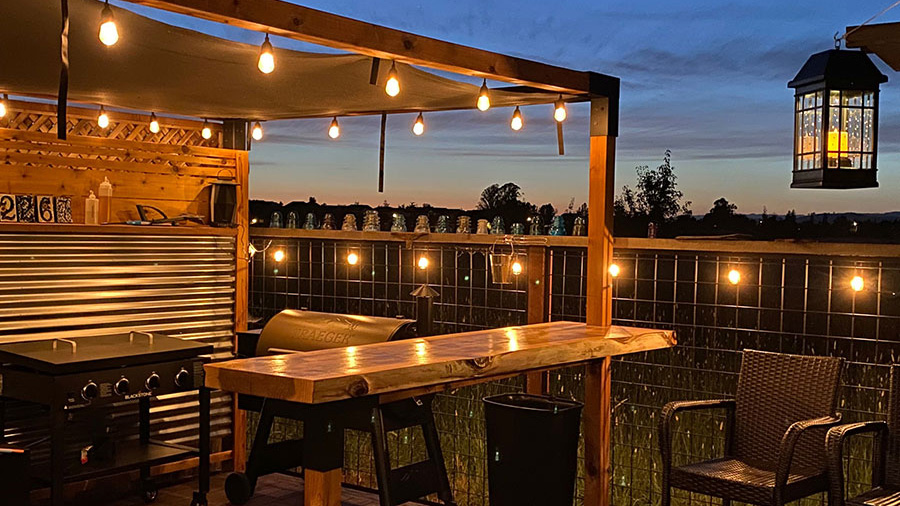
Pergolas grant you a bit of privacy from your neighbors and a bit of protection from the elements, which can make even the hottest summer day more enjoyable. If you love climbing plants, a pergola provides an extra layer of visual appeal. You’ll also get another defined seating area, which makes your deck even more party-ready.
Best of all? Pergolas are easy for DIY assembly, as long as you have the right plan and the right tools.
Other Decorative Options
Decks are becoming more and more customizable every day. Beyond lights and pergolas, here are a few more ways to set your deck apart from the rest:
Privacy Panels: Looking for peace and seclusion? Privacy screens and panels can make for a more intimate deck environment, while adding more style and personality to your look.
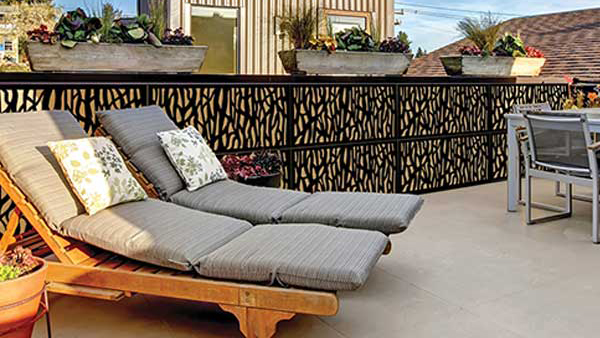
Railing Accessories: You can combine different colors and materials in your deck railings and balusters. White railings with sleek black metal balusters? Wood posts with clean cable railing? Anything and everything is on the table to customize the look of your deck. And if that’s not enough, you can distinguish your deck with any number of accessories, from subtle baluster collars to ornate centerpieces.
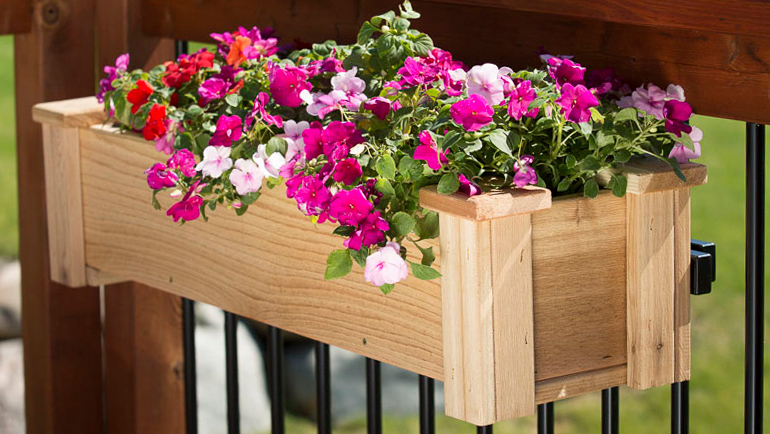
Drainage Systems & Underdeck Ceiling: Double your outdoor space by improving the area under your deck. Drainage systems funnel rain and runoff water to protect beneath your deck. Deck ceiling or underdecking beautifies your under-deck area with a sleek look.
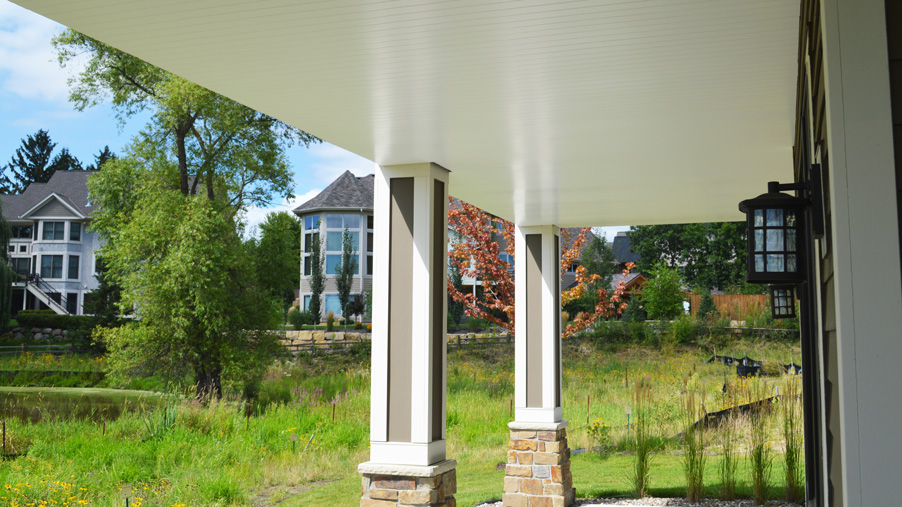
Screens: Screens shield your deck area from bugs and sun without compromising your view or airflow.
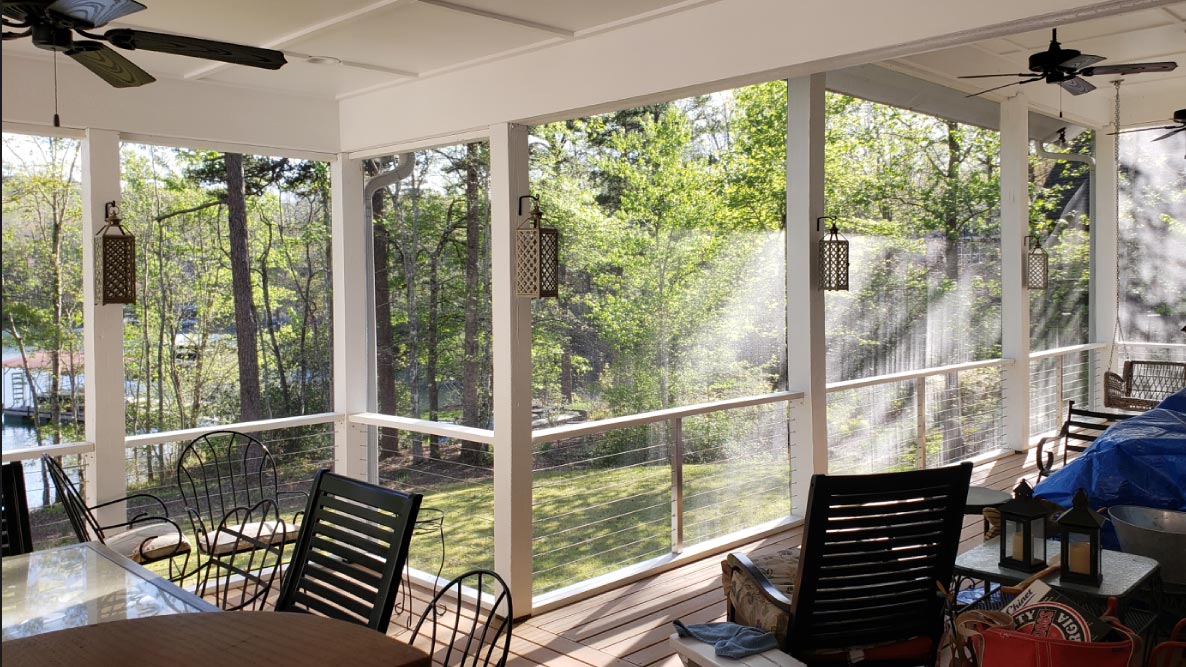
From Deck Project To Deck Done
Building a deck can feel like an overwhelmingly massive project on your own. But it’s a good thing you’re not alone.
At DecksDirect, we’re passionate about the massive impact your new deck can have on your happiness. That’s why we’re proud to be your personal deck project planners. When you call us, you’ll connect with a real human being - not an automated phone system - who can guide you from dreaming up your ideal deck to creating a practical deck plan to navigating the build phase.
We hope you’ll give us a call, and we hope this checklist gives you the confidence to start that deck project you’ve always dreamed of. Happy decking!
_landscape_web.jpg)
